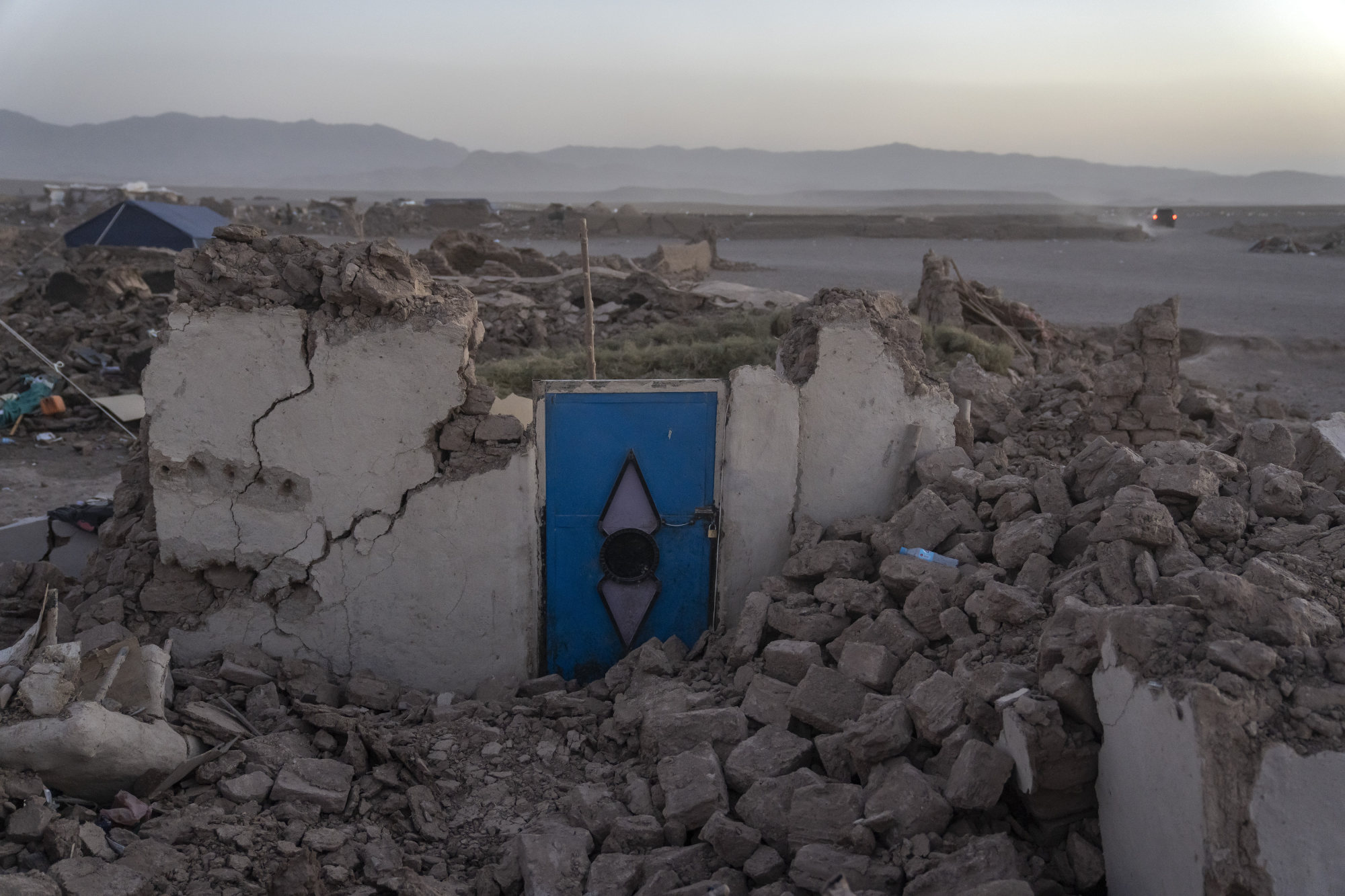
Afghanistan earthquakes: rescuers search for survivors – and the dead – as aid trickles in
- Rescue volunteers search for survivors after one of the deadliest earthquakes to rattle Afghanistan in years
- Pakistan and Iran offer to send rescuers and humanitarian aid, China’s Red Cross Society offers cash relief
Afghan villagers and volunteers on Monday helped dig for survivors of a series of deadly earthquakes, as aid began trickling into the devastated region.
Volunteers in trucks packed with food, tents and blankets flocked to hard-to-reach areas 30km (19 miles) northwest of Herat city, capital of the same-named province, hit by a magnitude 6.3 quake Saturday and eight powerful aftershocks.
They also brought shovels to help dig through the rubble of flattened villages as hope dwindled that anyone may still be buried alive.
“Many people have come from far-flung districts to get people out from the rubble,” said Khalid, 32, at Kashkak in Zenda Jan district.

“Everyone is busy searching for bodies everywhere, we don’t know if there are others as well under the debris.”
Local and national officials gave conflicting counts of the number of dead and injured.
Afghanistan earthquakes kill more than 2,400, injure at least 2,000
The Taliban administration on Sunday said at least 2,400 people were killed and many more injured in the quakes, which were among the world’s deadliest this year after tremors in Turkey and Syria, in which an estimated 50,000 people were killed.
The UN Humanitarian Office put the death toll at 1,023, with an additional 1,663 people injured, and more than 500 missing.
The World Health Organization said more than 11,000 people had been affected from 1,655 families.
As winter draws in, providing shelter for them will be a major challenge for Afghanistan’s Taliban government, which seized power in August 2021 and has fractious relations with international aid organisations.
Taliban authorities have banned women from working for UN and non-governmental organisations (NGOs) in the country, making assessments of family needs in deeply conservative parts of the country difficult.
Neighbours Pakistan and Iran have offered to send rescuers and humanitarian aid, while China’s Red Cross Society offered cash relief aid.

Save the Children called the quake “a crisis on top of a crisis”.
“The scale of the damage is horrific. The numbers affected by this tragedy are truly disturbing,” said the group’s country director Arshad Malik.
In Sarboland village, an Agence France-Presse reporter saw gutted homes, with personal belongings flapping in the wind as women and children camped out in the open.
Most rural homes in Afghanistan are made of mud built around wooden support poles, with little in the way of modern steel reinforcement.
Multi-generational extended families generally live under the same roof, meaning disasters such as Saturday’s quake can devastate local communities.
Afghanistan is already suffering a dire humanitarian crisis, with the widespread withdrawal of foreign aid following the Taliban’s return to power.
Herat province – home to around 1.9 million people on the border with Iran – has also been hit by a years-long drought that has crippled many hardscrabble farm communities.
Afghanistan is frequently hit by earthquakes, especially in the Hindu Kush mountain range, which lies near the junction of the Eurasian and Indian tectonic plates.
More than 1,000 people were killed and tens of thousands left homeless last June after a 5.9-magnitude quake struck the impoverished province of Paktika.
Agence France-Presse, Reuters and Associated Press
